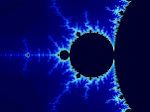
"Filmed by Andrei Tarkovsky in 1979 as Stalker, the Zone is visualised as a Chernobyl-like scarred, postindustrial landscape of ruins, waste, rubbish, of the remnants of industrial civilisation corroded, dilapidated and rapidly being reclaimed by nature . Tarkovsky's version of the Zone has gradually, over the last thirty years, become the foundation of an entire aesthetic. If Modernity, or Modernism, is our Antiquity, then its ruins have become every bit as fascinating, poignant and morbid as those of the Greeks or Romans were to the 18th century. Tarkovsky’s Zone is in some ways specific to the former USSR and a few locations in Estonia, yet practically every industrial or post-industrial country, has something resembling the Zone within it. Such an area would be, for instance, the remnants of industrial districts of East London. Beckton, Woolwich, Stratford, outposts marked by the cyclopean remains of silos, gasometers, factories. These are the places that inspired the Modernists of the 1920s: every manifesto from Le Corbusier's Vers d'une Architecture to Moisei Ginzburg's Constructivist response Style and Epoch had their lovingly photographed silos and power stations. Appropriately, also in the Zone can be found the bastard children of the Modernists, the scatterings of overambitious social housing, with their crumbling highrises and streets in the sky. These are remnants of something as alien and incomprehensible to the seamless mallscape of 21st century Capital, or the heritage Disneyland of European Urbanism, as Shklovsky’s Futurist Martians were to their contemporaries: only here without any of the insurrectionary promise of a new world, merely the ruins of a defunct future." --
read more "Delirious Moscow"



No comments:
Post a Comment